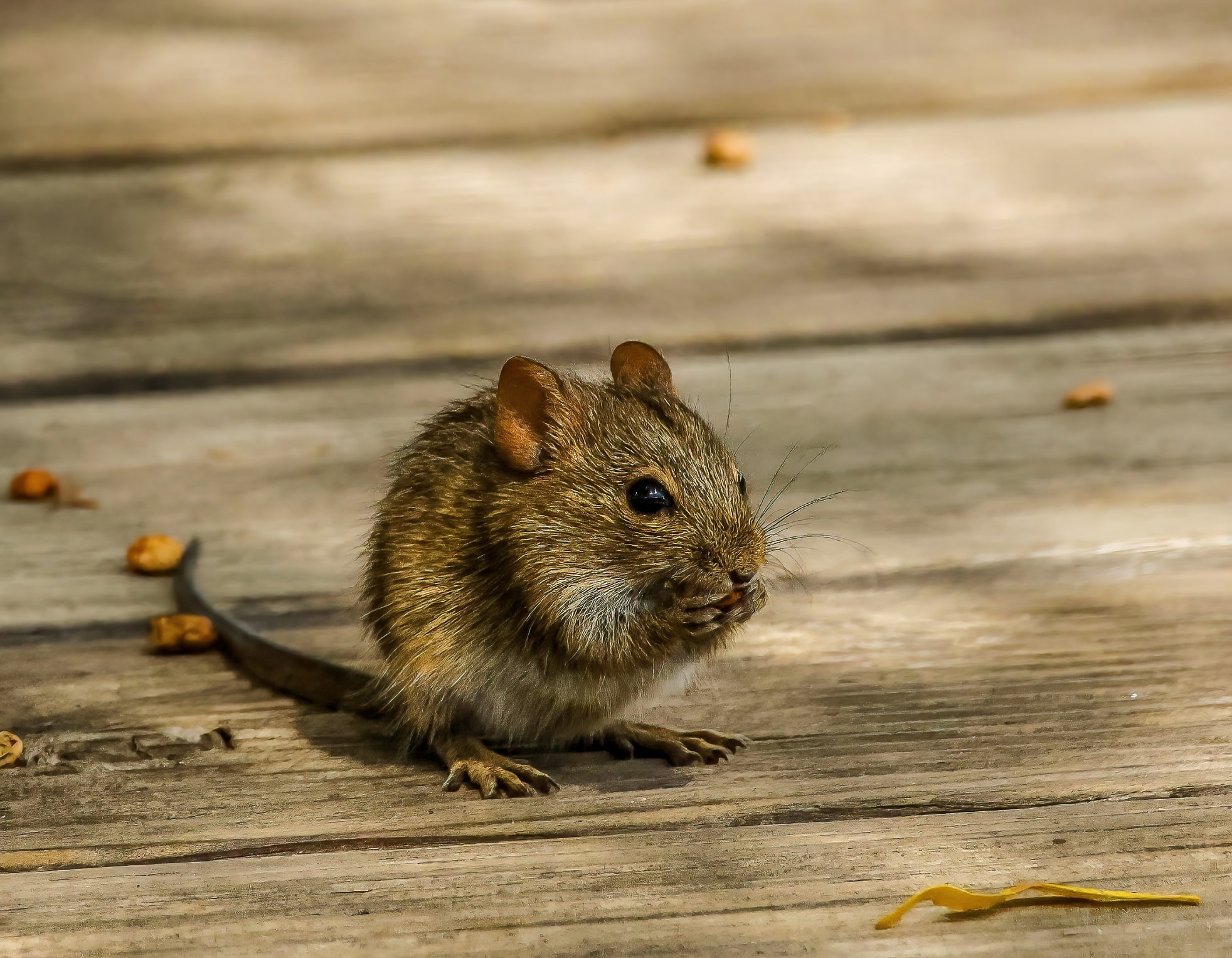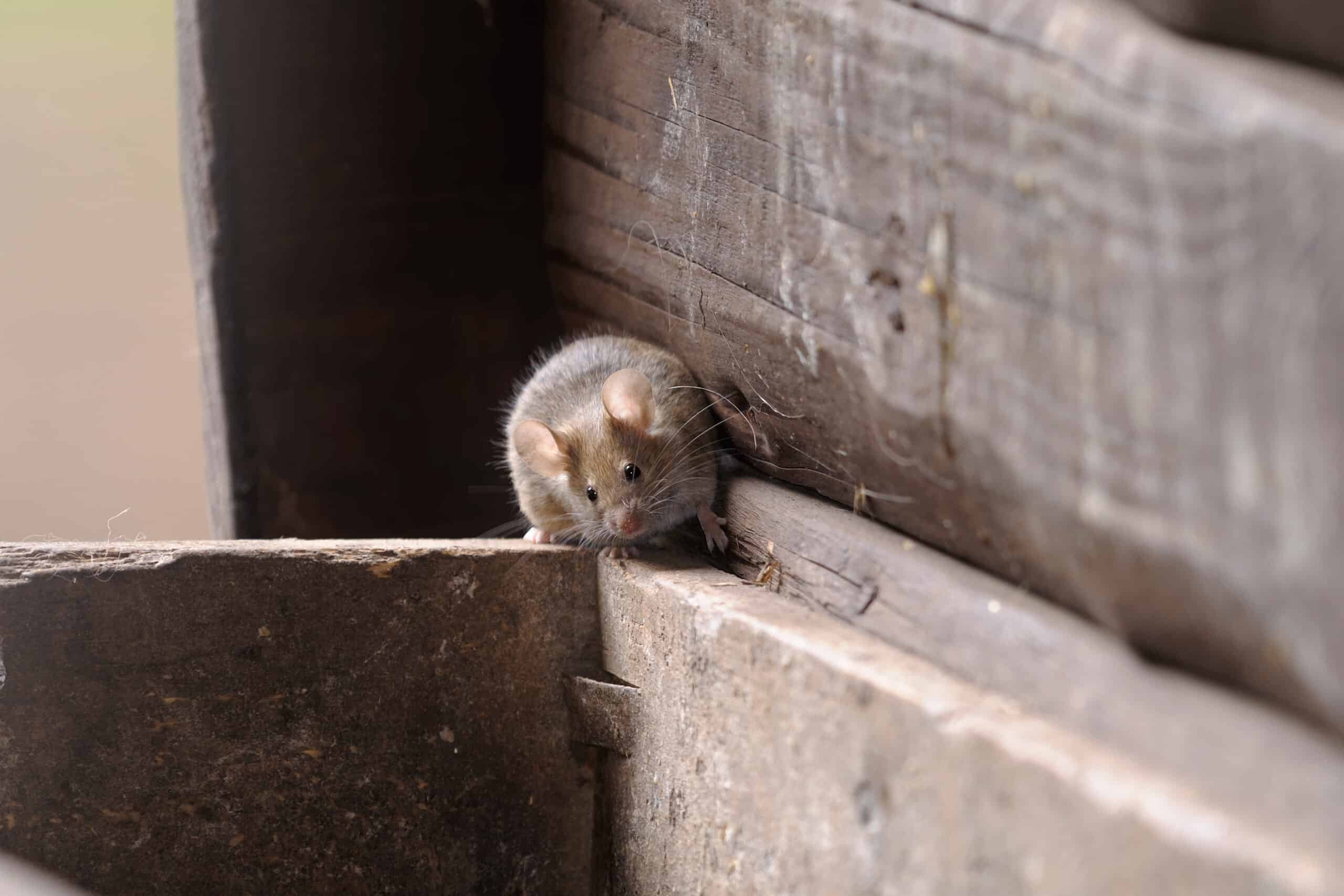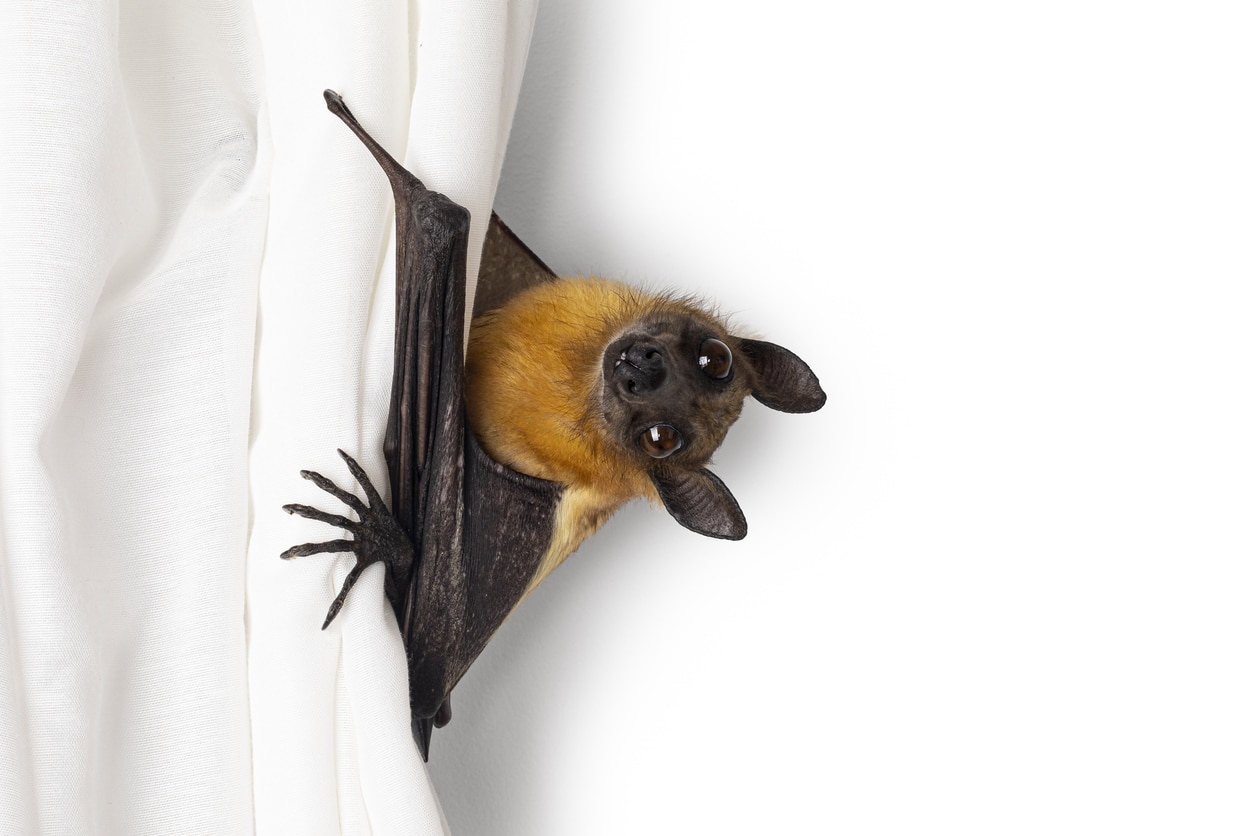Rodents don’t always make their presence known—at least not right away. By the time you…

Do Bats in the Attic Lead to Secondary Pest Problems?
Bats are quiet intruders. They slip into homes unnoticed, often through gaps near the roofline or small openings in vents. Many homeowners discover them only after seeing droppings or hearing fluttering noises at night. While bats are helpful in nature—they eat insects and support the ecosystem—their presence inside a home signals a bigger issue.
The real problem with a bat infestation isn’t just the bats themselves. It’s what follows. Once inside, bats create an environment that attracts other pests, damages insulation, and compromises indoor air quality. And if left unaddressed, what starts as a few bats in the attic can quickly turn into a multi-species infestation.
In this post, we’ll explain how bats create the conditions for other pests to thrive, why fast bat removal is critical, and what you need to know about long-term bat control.
Why Bats Choose Attics
Bats are drawn to quiet, dark, undisturbed areas—especially those that stay warm. That makes attics ideal. Loose soffits, broken vents, gaps in fascia boards, and roofline openings all serve as entry points. Once inside, bats roost in rafters or behind insulation, staying hidden during the day and exiting at night to feed.
Unlike rodents or squirrels, bats don’t chew wires or wood. But that doesn’t make them less problematic. Their droppings (guano) and urine can collect in large amounts, creating both health risks and an inviting habitat for other pests.
Bat Guano & the Chain Reaction
One of the most overlooked dangers of a bat infestation is guano buildup. Bat guano accumulates quickly and has a strong, ammonia-like odor. Beyond the smell, it creates several conditions that lead to more pest issues:
- Attracts Insects: Guano draws flies, cockroaches, and other scavengers looking for food and moisture.
- Promotes Mold: Moisture from droppings and urine seeps into insulation and wood, leading to fungal growth.
- Weakens Insulation: Once contaminated, insulation becomes less effective and may need replacement.
Guano also increases the risk of Histoplasmosis, a fungal infection caused by spores in bat droppings. These spores can become airborne when disturbed—especially during cleaning—and pose serious respiratory risks.
Secondary Infestations: What Follows Bats
Bats may be the first to move in, but they often pave the way for others. Here’s how bats in the attic can lead to broader pest control problems:
1. Insects That Feed on Guano
As guano accumulates, it becomes a food source for insects like:
- Cockroaches
- Flies
- Beetles
- Mites
These insects don’t just stay in the attic. Over time, they migrate through vents or wall voids and into living spaces.
2. Parasites Hitchhiking on Bats
Bats carry their own parasites. Once the bats are inside, these pests jump off and begin looking for new hosts or hiding places. Common bat parasites include:
- Bat Bugs (close relatives of bed bugs)
- Fleas
- Mites
- Ticks
Bat bugs can behave similarly to bed bugs, biting humans and hiding in cracks, ceilings, and furniture. Removing bats without addressing these secondary pests often leads to a frustrating surprise weeks later.
3. Predators Looking for a Meal
The scent of guano, dead insects, or even weakened insulation can attract predators like raccoons, snakes, or larger rodents. These animals follow the scent trails or take advantage of already-damaged entry points. What began as a quiet roosting spot for bats can become a full-blown wildlife control issue.
Why DIY Bat Removal Doesn’t Work
Bats are protected in many states, especially during maternity season when pups are unable to fly. This means removal must follow specific rules to be humane and legal. Trapping or blocking entry points without proper planning often results in bats dying inside walls or returning as soon as the barrier breaks down.
Additionally, most DIY bat exclusion attempts fail to address the full problem:
- Entry points are missed or sealed improperly
- Guano is not fully removed
- Parasites and secondary pests are left behind
- Air quality issues remain unresolved
Proper bat control requires a comprehensive approach—exclusion, cleanup, sanitation, and sealing.
Long-Term Bat Control Strategies
Addressing bat infestations requires more than just evicting the bats. The goal is long-term prevention. That means:
1. Identifying Entry Points
Bats can enter through openings as small as 3/8 of an inch, making thorough inspections essential. Key areas to examine include:
- Roofline Gaps: Small separations or cracks along the roofline can serve as entryways.
- Ridge Vents: These vents, if not properly sealed, may allow bats to infiltrate the attic.
- Gable Vents: Damaged or unprotected vents can be inviting to bats seeking shelter.
- Chimney Caps: Absent or ill-fitting caps provide a direct route into the home.
- Eaves & Soffits: Gaps or cracks in these areas can offer bats easy access to attic spaces.
Conducting a meticulous inspection to identify these potential entry points is the first step in effective bat control.
2. One-Way Exclusion
Once entry points are identified, the next step is humane exclusion. This involves installing one-way devices, often referred to as check valves, over the openings. These devices allow bats to exit but prevent their re-entry. Timing is crucial; exclusion should be conducted outside of maternity seasons to avoid trapping flightless young bats inside.
3. Sanitizing the Attic
After ensuring all bats have vacated, addressing the remnants they’ve left behind is imperative. Bat guano can harbor fungal spores that are responsible for histoplasmosis, a respiratory illness. Proper cleanup involves:
- Eliminating Odors: Removing guano and urine to prevent lingering smells.
- Preventing Mold Growth: Ensuring the area is dry and sanitized to deter mold and fungi.
- Discouraging Other Pests: Cleaning up to avoid attracting insects that are drawn to guano.
In cases of significant contamination, replacing affected insulation may be necessary to restore the attic’s integrity.
4. Sealing & Monitoring
With the attic cleaned, sealing all former entry points is vital to prevent future infestations. Durable materials like metal flashing, mesh, and sealant create a long-lasting barrier. Regular monitoring of these areas helps detect and address any new vulnerabilities promptly.
Prevention Is Easier Than Repair
The longer bats remain in a structure, the more likely they are to attract other pests. Quick action not only protects your home but also reduces long-term repair costs.
Signs you may have bats include:
- Scratching or fluttering noises at dusk or dawn
- Strong ammonia-like odors
- Guano on windowsills, attics, or insulation
- Stains near rooflines or attic vents
- Sightings of bats flying near the roof at dusk
If you notice any of these signs, schedule a professional inspection before the issue spreads.
Keep Bats Out with Creature Control in Michigan
Bats in the attic can lead to bigger problems if left unchecked. Creature Control offers humane, effective bat removal and exclusion services to protect your home long-term. Our team uses proven methods to safely evict bats and seal entry points, all while preserving the balance of the surrounding ecosystem.
If you’re dealing with a bat infestation or want to prevent one, contact Creature Control. We’ll inspect your attic, identify access areas, and implement strategies to keep bats—and the pests they attract—out for good.
To learn more about our bat control services or schedule an inspection, call Creature Control at 1-800-441-1519.
Contact Us Today!
"*" indicates required fields
Call Us
For Immediate Help
Call 1-800-441-1519 to talk to one of our local wildlife experts. Or, fax us at (734) 551-9795.
Business Hours
Monday – Friday: 8 a.m. to 6 p.m
Saturday: 8 a.m. to 2 p.m.
Sunday: 8 a.m. to 12 p.m.
For After-Hours Help
Call (877) 623-9190. For after-hours emergencies, please be aware that additional charges will apply. We can also be reached by fax at (734) 551-9795.


